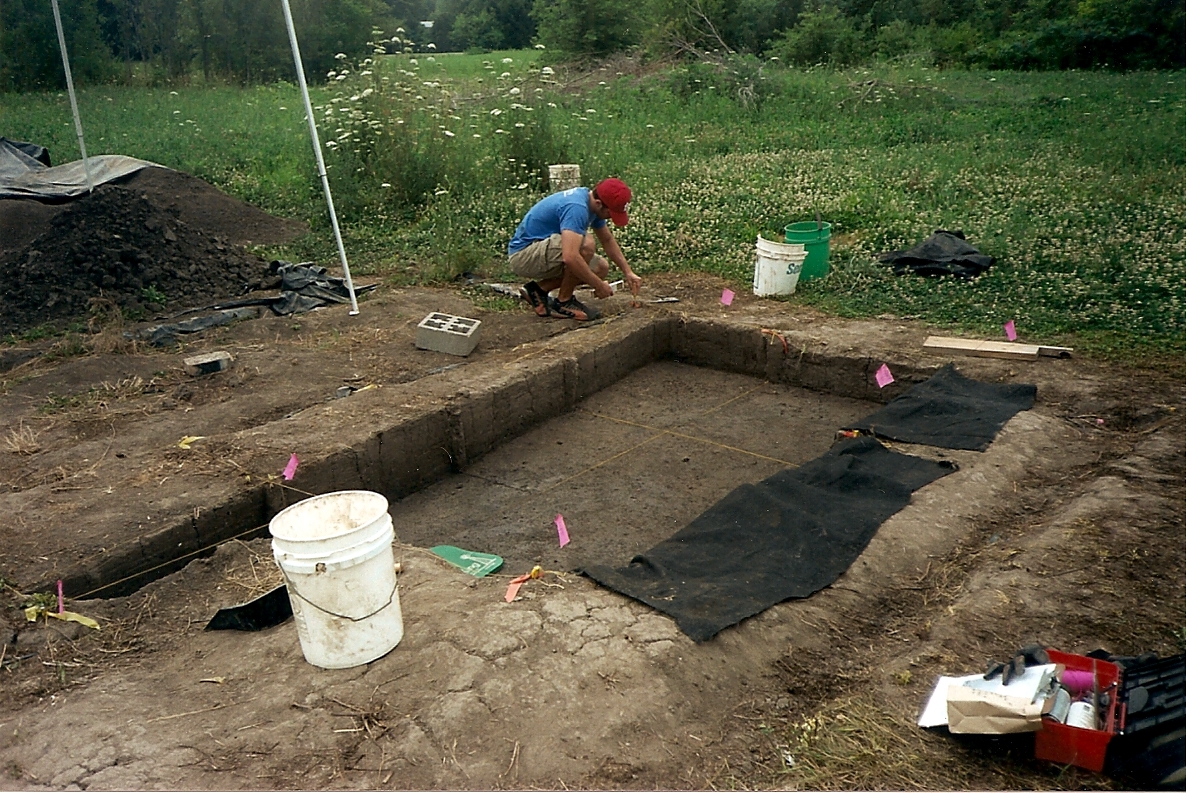The Conservancy’s Fingerhut Tract Preserve is located at the western periphery of the Cahokia Mound Historic Site in western Illinois, the largest prehistoric habitation site north of Mexico and one on only two archaeological sites in the United States to be designated a World Heritage Site.
Eight students from Saint Louis University, led by archaeologist Mary Vermilion, excavated at the Fingerhut Tract in May and June of 2012. A soil resistivity survey in 2001 indicated the possible locations of a number of house basins, and the recent research was designed to test-excavate four of the basins, one of which was within Fingerhut.
Due to time constraints, only portions of the proposed units were excavated. The excavations did confirm the presence of a basin wall in the south and west excavation units but not in the north and east. Apparently the structure is not as large as the soil resistivity survey indicated. The excavations confirmed that the Conservancy’s land contains significant archaeological deposits beneath the surface.
Previous research within the Fingerhut Tract has indicated considerable cultural activity. In particular, the area has yielded evidence of the manufacture of basalt celts as well as stone micro-drills used in fashioning ornaments from shell. This evidence for the manufacture of prestige items sets the Fingerhut tract apart from other purely residential areas.




